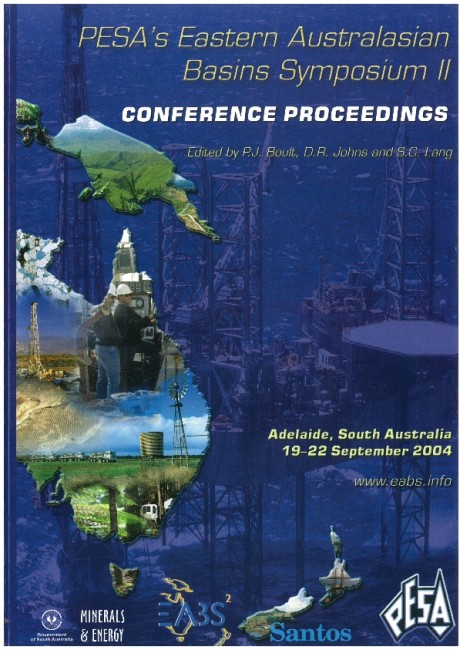Publication Name: PESA's Eastern Australasian Basin Symposium II
Authors: S.J. King and B.C. Mee
Date Published: December 2004
Number of Pages: 28
Reference Type: Book Section
Abstract:
During the final phases of basin evolution in the Ceduna Sub-basin on the southern Australian margin, a massive influx of terrigenous sediments resulted in the development of a strongly progradational shelf-margin delta system, informally known as the Ceduna Delta. The Late Santonian to Maastrichtian Ceduna Delta is one of the largest and least calibrated deltaic systems on the Australian Margin. In an exploration history dating back to the 1950s, only six wells have penetrated its succession. The most recent, Gnarlyknots-1 A, was drilled by Woodside on behalf of its joint venture partners Anadarko and Encana in 2003.Limited well penetration has necessitated a strong dependence on detailed seismic facies analyses and depositional analogues to interpret play elements. The resulting models have assisted with prediction of reservoir, seal and source facies, as well as providing insights into petroleum generation, migration and trapping mechanisms. Six component seismic facies, each defined by a unique suite of reflection characteristics have been identified within the Ceduna Delta. The seismic facies exhibit predictable lateral associations and map out as a series of broad belts roughly parallel to the delta front. A complete spectrum of deltaic depositional systems is represented, from the most proximal alluvial plain to the most distal submarine fan.
The depositional diversity within the Ceduna Delta offers a variety of play concepts including turbiditic to non-marine reservoir/seal pairs, marine and non-marine source rocks, and structural and stratigraphic trapping mechanisms. The resulting plays, coupled with traps exhibiting possible fit-to-structure amplitude anomalies (3D seismic required to confirm), and the encouraging post-well analyses of Gnarlyknots-lA, provide strong support for the presence of a working hydrocarbon system in the Ceduna Delta.


